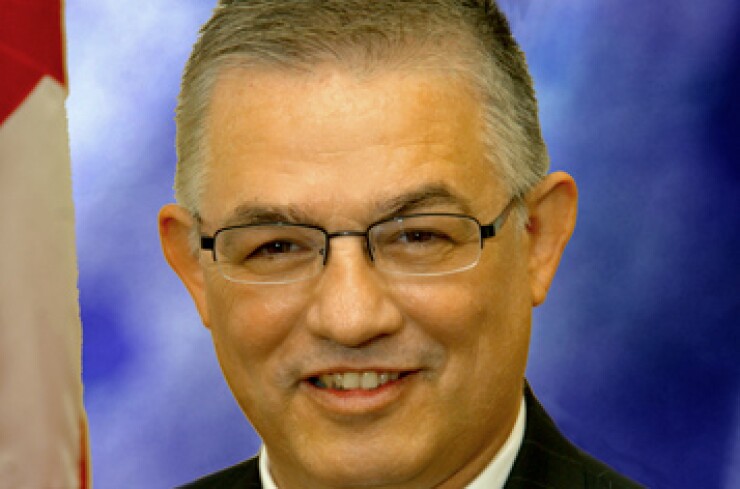
WASHINGTON – The District of Columbia's proposed six-year capital improvements plan includes $6.3 billion in infrastructure spending, nearly $4.3 billion of which will be financed with the issuance of municipal bonds.
The capital improvements plan was described by Jeffrey DeWitt, the district's chief financial officer, to the city council on Monday as part of his presentation on the proposed $13.4 billion fiscal 2017 budget for the district, which is 3.1% higher than the previous fiscal year's budget.
DeWitt attributed the rising figure to the district's 11.1% population growth over the last half-decade.
The fiscal 2017 budget is the first in which the district rather than Congress will have control over spending its own money. The district only has to ask Congress for appropriations for the federal payments portion of the budget, about 10% of its budget, following a historic ruling by a D.C. Superior Court judge on March 18. The six-year capital improvements plan calls for $1.3 billion of capital expenditures in fiscal 2017, roughly $1 billion of which will be financed with bonds. The $1 billion will come from $865 million of income tax revenue or general obligation bonds, including $5 million in taxable bonds; $6.5 million of short-term bonds; and $94 million from Grant Anticipation Revenue Vehicle (GARVEE) bonds.
The remaining fiscal 2017 capital spending will be financed with: an $80 million transfer from the general fund; $161 million of federal grants and payments from the U.S. Highway Trust Fund; $45 million from local transportation fund revenue; $27 million from the local Highway Trust Fund to match to grants from the Federal Highway Administration; $26 million from the sale of assets; and $5 million from private grants.
The bonds will help finance school renovation, the expansion of the Streetcar line, the replacement of the Frederick Douglass Bridge, the Marin Luther King, Jr. Memorial Library and transitional housing, among other initiatives.
District of Columbia Mayor Muriel Bowser, who submitted the proposed budget on March 24, called it a "Fair Shot" that improves living conditions and promotes pathways for the middle class.
"The Fair Shot Budget is geared toward making life better for Washingtonians today, as we prepare for a strong, healthy and prosperous future," Bowser said. In describing the six-year capital improvements plan, budget documents said the district has increased its capital expenditures to reinvest in its aging infrastructure. The plan, which is updated annually, envisions the issuance of another $4.1 billion of bonds from fiscal 2018 through fiscal 2022, peaking at $1.6 billion in fiscal 2018. The fiscal 2017-2022 CIP calls for significant investment in infrastructure, including $831 million toward Washington Metropolitan Area Transit Authority's Metrorail and bus system improvements. Metro Board of Directors Chairman Jack Evans said late last month that Metro was in need of more than $1 billion to fund rail maintenance. Officials also warned that certain rail lines could be shut down for up to six months. The CIP provides $575.7 million for the district's newly launched streetcar system.
Another $1.3 billion would go toward improving the district's elementary, middle and high schools, as well as $55 million for the University of the District of Columbia. The district launched a schools modernization initiative in 2008, and has invested nearly $4 billion during that span.
The CIP includes $179 million in renovation funding for the Martin Luther King Jr. Memorial Central Library, as well as an additional $68.4 million to modernize other district libraries and update I.T. systems and public access computers.
Roughly $98.7 million will improve United Medical Center, and another $20 million will be used for emergency housing. Officials said the district anticipates receiving a $9 million payment to replace the Federal City Shelter.
The six-year capital plan also calls for $350 million of investment in streets and $698.6 million for the replacement of the Frederick Douglass Bridge.
The plan includes $5 billion in planned debt service through 2022, $639 million of which is planned for fiscal 2017.
DeWitt said roughly one-third of all future revenue growth will go toward debt service for the bonds. As a result, labor, contract and other non-capital costs would need to remain we3ll below 3% growth throughout the six-year plan, he said.
"Careful monitoring of these costs, as well as execution of the capital plan, is required to ensure the financial plan remains balanced in all future years," DeWitt wrote. "The large bond funding does have an impact on future available resources."
DeWitt attributed the rising figure to the district's 11.1% population growth over the last half-decade. The proposed fiscal 2017 budget grew 3.1% over the approved fiscal 2016 budget.





